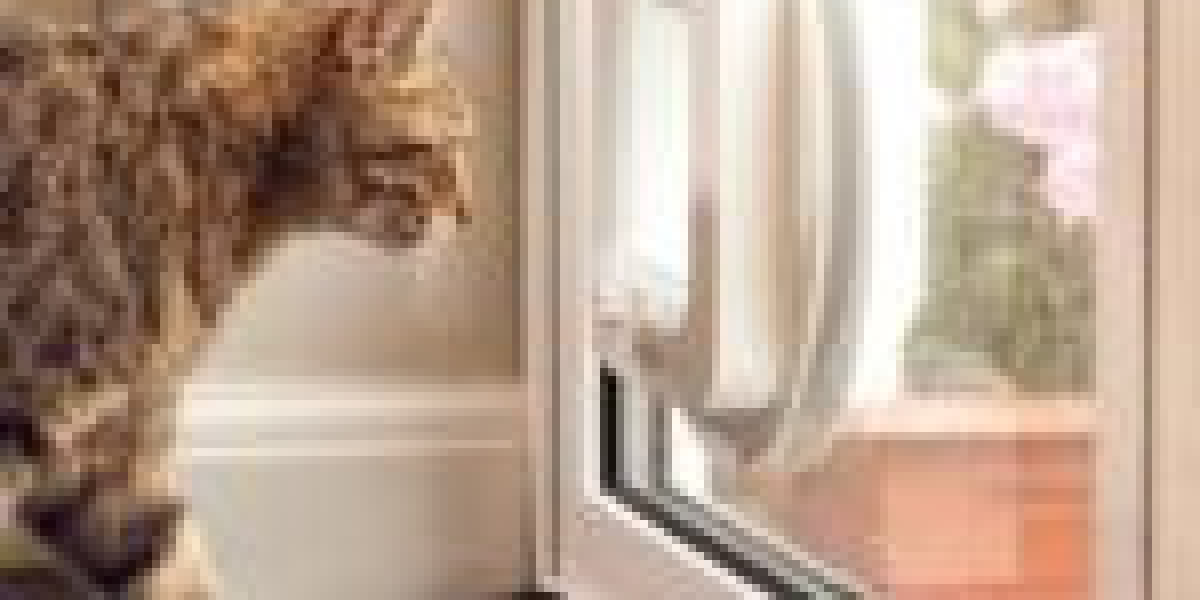
The Purrfect Passage: Expert Tips for Cat Flap Installation
For cat owners, the desire to supply their feline companions with flexibility and self-reliance while keeping the security and convenience of their home is a typical goal. A cat flap, seemingly a simple solution, uses simply that-- enabling your cat to come and go as they please without requiring you to play doorman. However, an inadequately set up cat flap can result in draughts, security vulnerabilities, and disappointed felines. For that reason, comprehending the nuances of cat flap installation is important for both your cat's wellness and your comfort.
This article works as a comprehensive guide to cat flap installation, providing expert tips and advice to guarantee a smooth and effective task. Whether you're an experienced DIY enthusiast or a first-timer, this guide will equip you with the understanding to create the purrfect passageway for your beloved cat.
Picking the Right Cat Flap: The First Step to Success
Before you even think of tools and design templates, it is crucial to pick the ideal cat flap for your needs and your home. The market uses a diverse range of alternatives, each with its own set of features and benefits. Think about these factors when making your selection:
- Type of Cat Flap: Cat flaps are not a one-size-fits-all service. They are available in numerous types, each using various levels of security and convenience:
- Standard Manual Cat Flaps: These are the most basic and most affordable options, permitting any cat (or little animal) to go into and leave. They are suitable for low-security environments.
- Magnetic Cat Flaps: These flaps respond to a magnet attached to your cat's collar. They use somewhat better security by avoiding stray animals from getting in.
- Infrared Cat Flaps: Similar to magnetic flaps, these utilize an infrared sensor that checks out an unique collar tag. They are more safe and secure than magnetic flaps and less susceptible to interference.
- Microchip Cat Flaps: The most advanced choice, these flaps are triggered by your cat's unique microchip, ensuring only your pet flap installer can get entry. This offers the greatest level of security and control, preventing undesirable animals from entering your home.
- Material and Durability: Cat flaps are normally made from plastic or aluminium.
- Plastic flaps are usually more affordable and lighter but may be less long lasting and more susceptible to weathering.
- Aluminium flaps are more robust, weather-resistant, and protected, often featuring a more powerful locking mechanism.
- Size of Your Cat: Ensure the flap opening is big enough for your cat to go through conveniently without struggling. Consider your cat's size and type when selecting. Step your cat from chest to ground and add a couple of inches for comfy clearance.
- Installation Location: Where will you be installing the cat flap? Doors, walls, and windows each present different installation challenges and require specific types of cat flaps or additional accessories like tunnels for thicker walls.
- Budget: Cat flaps range in price from standard manual models to modern microchip variations. Set a budget plan and consider the long-term worth and security benefits when making your choice.
Preparation is Paramount: Setting Yourself Up for Success
Once you have chosen the ideal cat flap, correct preparation is essential to a smooth installation. Hurrying into the process can lead to mistakes and disappointment. Take the time to strategy and collect whatever you need ahead of time:
Choosing the Right Location: Carefully think about the area for your cat door fitting flap.
- Security: Choose a location that is not easily available to burglars and preferably away from public view.
- Availability for Your Cat: Ensure the area is easily available for your cat, both within and outside. Consider the height from the ground and any obstacles.
- Benefit for You: Select a location that is practical for access and maintenance however doesn't interrupt the flow of your home.
- Preventing Utilities: Check for any covert wires, pipelines, or structural aspects within the wall or door where you prepare to set up the flap.
Collecting the Necessary Tools and Materials: Having all the right tools at hand will make the installation process a lot easier. Essential tools typically include:
- Cat flap set: This ought to consist of the cat flap itself, a template, screws, and potentially a tunnel extension depending upon the model and installation type.
- Pencil and ruler/tape step: For marking and determining accurately.
- Drill: With suitable drill bits for pilot holes and possibly bigger bits for cutting if required by your selected technique.
- Jigsaw or Keyhole saw: For cutting the opening for the cat flap (depending on product and installation method).
- Screwdriver: To protect the cat flap in location (frequently a Phillips head screwdriver).
- Security glasses and gloves: For safety throughout cutting and drilling.
- Sealant (optional): To seal around the cat flap and avoid draughts and water ingress, particularly for external doors and walls.
- Spirit level (optional): To ensure the cat flap is set up directly.
Measuring and Marking: Accuracy is essential for an appropriate fit.
- Utilize the template supplied: Most cat flap packages include a template. Utilize this to properly mark the cutout area on your picked place.
- Consider your cat's height: Position the design template at a suitable height for your cat. The bottom of the flap need to be low enough for comfy entry and exit but not too low that it allows rain or dirt to enter easily.
- Double-check measurements: Before you begin cutting, verify all your measurements and markings to avoid mistakes.
Step-by-Step Installation in a Wooden Door (Example)
Installing a cat flap in a wooden door is a common DIY job. Here's a general detailed guide:
- Mark the Cutout: Tape the template provided with your cat flap package onto the door at the wanted area. Utilize a pencil to trace the outline of the design template onto the door.
- Drill Pilot Holes: Using a drill and a drill bit a little larger than the width of your jigsaw blade (or keyhole saw), drill pilot holes at each corner of the significant summary and possibly a few along the straight edges to make starting the jigsaw easier.
- Cut the Opening: Using a jigsaw or keyhole saw, carefully cut along the significant summary, connecting the pilot holes. Take your time and follow the line properly. Guarantee you use safety glasses and gloves during this action.
- Test Fit and Sand (if needed): Before completely inserting the cat flap, test fit it in the opening. If it's too tight, carefully sand down any rough edges of the cutout till the flap fits comfortably.
- Insert and Secure the Cat Flap: Place the two halves of the cat flap (inner and outer frame) into the opening from either side of the door. Align the screw holes.
- Screw Together: Using the screws supplied, tighten the 2 halves of the cat flap together. Do not overtighten, as this might harm the door or the cat flap.
- Seal (Optional): Apply sealant around the edges of the cat flap where it satisfies the door frame for included weatherproofing and insulation.
Installation Considerations for Different Materials
While wooden doors are fairly uncomplicated, installing cat flaps into other materials requires different approaches:
- Glass Doors and Windows: Installing a cat flap in glass requires specialized tools and expertise. It is highly suggested to employ a professional glazier to cut and install a cat flap in glass. Trying this yourself can be hazardous and dangers shattering the glass.
- UPVC Doors: UPVC doors typically have actually enhanced panels or might contain metal components. Installation can be complicated and might require professional help. Thoroughly examine the door's construction before trying DIY installation or speak with the door producer's standards.
- Walls: Installing a cat flap in a wall requires producing a tunnel through the wall thickness. This typically includes purchasing a tunnel extension package that matches the depth of your wall. The installation process is similar to door installation however requires cautious planning and possibly more extensive cutting and sealing.
Post-Installation Tips: Welcoming Your Cat to Freedom
Once the cat flap is set up, the task isn't rather ended up. Here are some tips for assisting your cat change and making the most of your brand-new cat flap:
- Introduce the Cat Flap Gradually: Don't anticipate your cat to use the flap immediately. Start by propping the flap open and motivating your cat to walk through it with treats and favorable support.
- Entice with Treats and Toys: Place treats or toys on either side of the flap to incentivize your cat to check out and use it.
- Perseverance is Key: Some cats adjust rapidly, while others may take time. Be client and prevent forcing your cat through the flap, which can produce unfavorable associations.
- Inspect for Draughts and Security: After installation, look for any draughts or spaces around the cat flap. Guarantee it is safely fitted and functioning correctly.
- Regular Maintenance: Keep the cat flap tidy and devoid of particles. Periodically inspect the locking system and hinges to guarantee they are functioning efficiently.
By following these tips and taking your time with the installation process, you can develop a safe, convenient, and welcoming cat flap for your feline buddy, improving their liberty and enhancing their life while keeping the convenience and security of your home.
Often Asked Questions (FAQs) about Cat Flap Installation
Q: Can I set up a cat flap in any door?
A: While quick cat flap installation flaps can be set up in the majority of types of doors, some require more specialized strategies or professional assistance. Wood doors are the easiest for DIY installation. Glass doors and UPVC doors might need professional installation.
Q: How high should I set up a cat flap?
A: The perfect height depends upon your cat's size, however usually, the bottom of the flap need to be around 10-15 cm (4-6 inches) from the ground. This permits most cats to travel through easily without needing to crouch too low.
Q: What tools do I actually need for cat flap installation?
A: Essential tools consist of a drill, jigsaw or keyhole saw, screwdriver, pencil, ruler/tape procedure, and security glasses and gloves. A sealant weapon and sealant are recommended for external doors and walls.
Q: How long does it require to install a cat flap?
A: For an easy installation in a wooden door, it can take anywhere from 1 to 3 hours, depending upon your DIY experience and the intricacy of the door. Installation in other materials or walls might take longer.
Q: What if I am not positive in my DIY abilities?
A: If you are uncomfortable with DIY projects, it is constantly best to employ a professional handyman or carpenter to set up the cat flap for you. This ensures a proper and protected installation, especially for more complex setups like glass or UPVC doors and walls.
Q: How can I stop roaming cats from utilizing my cat flap?
A: Microchip cat flaps are the most efficient way to avoid stray animals from entering your home as they just open for your cat's signed up microchip. Magnetic and infrared flaps provide some, but less trustworthy, protection.
Q: Do cat flaps let in draughts?
A: Modern cat flaps are created with draught-excluding features like brushes or magnetic closures. Nevertheless, proper installation and sealing are essential to lessen draughts.
Q: How do I train my cat to use a cat flap?
A: Patience and favorable support are key. Start by propping the flap open, using deals with and toys to lure your cat through. Slowly lower the openness of the flap as your cat gets more comfortable.
Q: Can I install a cat flap in a wall?
A: Yes, cat flaps can be set up in walls. This usually needs a tunnel extension package to connect the inner and external frames through the density of the wall. Wall installations may be more intricate and need cautious preparation.
Q: What maintenance is required for a bespoke cat flap installation - resource for this article, flap?
A: Regularly tidy the flap and surrounding area to remove dirt and debris. Examine the hinges and locking system occasionally and tighten up screws if necessary. Lubricate hinges with silicone spray if they become stiff.








